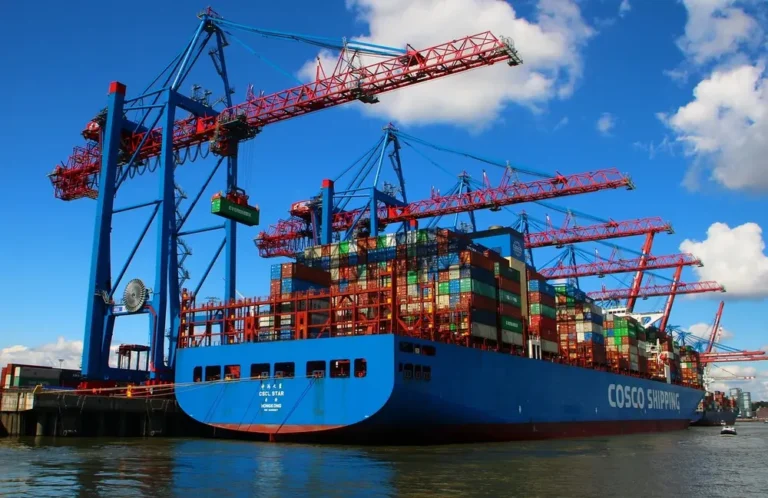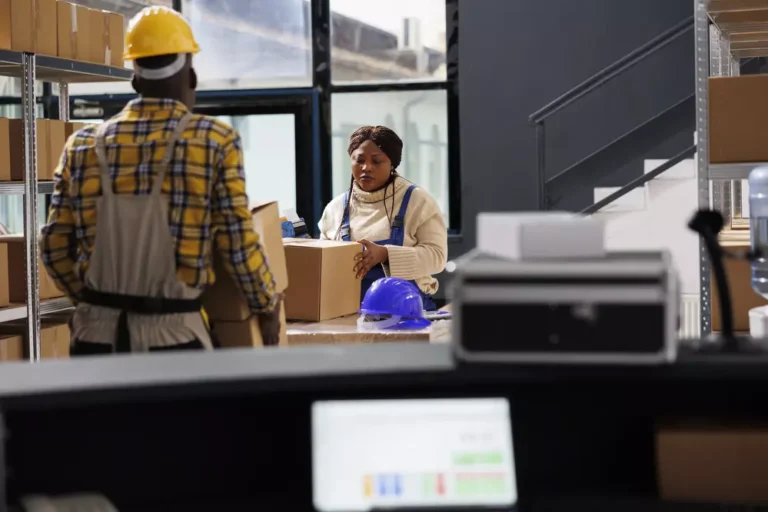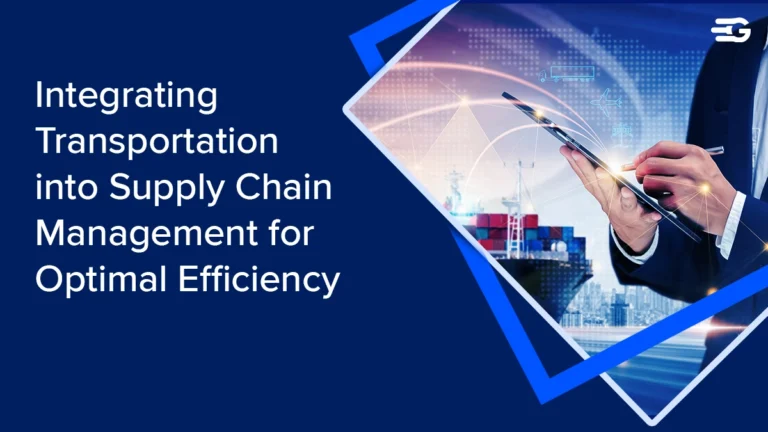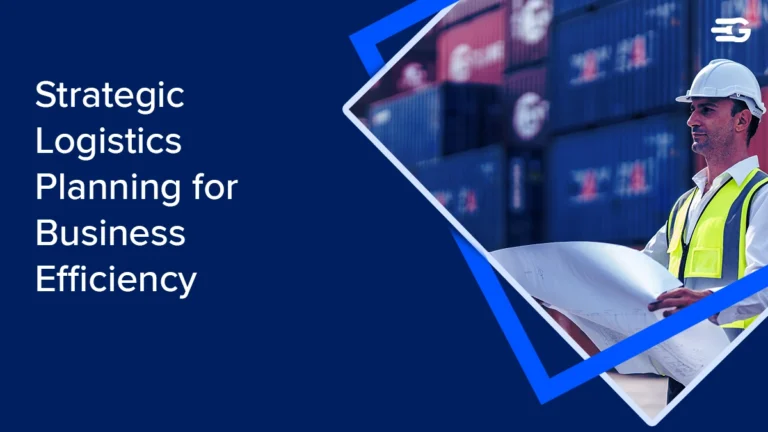Optimizing Supply Chain Logistics for Success
They say the sky is the limit for excellence and so is the same for optimizing processes in supply chain logistics. It is ironic how the most deferred attitude of greed drives us as humankind towards excellence.
So, in supply chain logistics, what more is there to optimize?
Sadly, if you do not see the scope, you need to amp up your ambitions and look out for solutions.
Embracing AI and other new technologies, and achieving greater visibility throughout the supply chain, businesses can build resilience, unlock new revenue streams, and secure a competitive edge in the ever-evolving digital landscape that enables prioritizing customer experience.
All of this process falls within the spectrum of optimization.
As a part of the same strategic planning and streamlined execution are crucial for successfully optimizing supply chain management and logistics. However, they are not isolated functions but operate in a symbiotic relationship.
SCM meticulously plans the product lifecycle, from sourcing to delivery, while logistics tirelessly executes that plan. Effective communication and collaboration between these two forces lead to a streamlined flow of goods, reduced costs, and ultimately, a significant competitive advantage.
The concept of optimization sounds way broader. What are the concise pillars of this optimization?
The world of supply chain logistics is complex, but beneath the intricate steps lie a few fundamental pillars. These pillars, elevate logistics from a simple product mover to a strategic advantage.
Visibility and Traceability:
Today’s competitive markets require businesses to establish and maintain impeccable communication channels with customers. Real-time visibility and updates about the goods are increasingly becoming a mandatory part of the supply chain connecting with the consumers. In this context, visibility and traceability are of utmost importance.
Today’s logistics embrace real-time tracking powered by GPS technology and integrated systems. Customers can now follow their package’s progress like a hawk, allowing them to plan accordingly. But it doesn’t stop there.
Advanced sensor technology embedded in shipments, particularly those carrying perishables, can monitor temperature and humidity throughout the journey. This valuable data ensures product quality and prevents costly spoilage, adding another layer of transparency and efficiency to the logistics world.
Inventory Management:
Too much inventory ties up capital, while too little leads to stockouts and lost sales. Effective inventory management is the key to striking the perfect balance. Data analysis and machine learning forecast demand patterns, allowing for proactive inventory management.
This ensures the right products are strategically placed to meet customer needs, without the risk of stockouts or wasted storage space. To further optimize inventory, logistics uses safety stock – a calculated buffer of essential items to account for unexpected fluctuations or disruptions in the supply chain.
Automation and Technology Integration:
Logistics embraces automation and technology integration to streamline processes and boost efficiency. The integration of automation and technology is not just about efficiency; it’s about creating a more sustainable and resilient supply chain as well for the environment and also the personnel involved in the operations.
- Warehouse Automation: Repetitive tasks like picking and packing can be significantly accelerated with the help of robots and automated systems.
- Transportation Management Systems (TMS): TMS acts as the brain of logistics, optimizing routes, scheduling deliveries, and managing freight costs.
Given these pillars, is there a need for a nodal and an overarching strategy to keep the flow of operations intact?
Sourcing:
Procurement, the process of acquiring goods and services needed for a business, sits at the foundation of supply chain logistics. Here, the building blocks for your product are sourced and suppliers are carefully chosen.
- Strategic Sourcing: Procurement goes beyond simply finding the cheapest supplier. Strategic sourcing involves identifying reliable vendors who can deliver high-quality materials consistently and at a competitive price.
- Supplier Management: Building strong relationships with suppliers is key. Procurement fosters open communication, negotiates favorable contracts, and monitors supplier performance to ensure they meet quality and delivery standards.
Transportation Management:
- Network Optimization: The goal of transportation management is to choose the most efficient and cost-effective mode of transportation for each leg of the journey. This could involve a combination of trucks, ships, trains, or even airplanes, depending on factors like distance, urgency, and product type.
- Route Planning: in the physical movement of goods, the route and the congestion become defining factors as they can drastically affect the time of delivery as well as the quality of the goods. Transportation management optimizes delivery routes. This involves factors like traffic patterns, fuel efficiency, and driver availability.
While these factors are all in interplay, there will always be a looming threat of discoordination that can sabotage the entire network of operations.
How does one make sure that doesn’t happen?
The answer shall be some proven practices and systems that make the supply chain logistics management watertight.
Integrated Logistics:
Integrated logistics are an impeccable answer for a sluggish supply chain. Furthermore, disjointed logistics processes can lead to inefficiencies. Some standard steps can create foolproof logistic process integration.
Creating standardized processes across warehousing, transportation, and order fulfillment eliminates confusion and ensures consistency. This could involve implementing uniform picking and packing procedures or adopting a company-wide warehouse management system (WMS).
As an extension to the standardization, implementing a centralized logistics management platform that allows real-time data sharing across all departments is imperative. Such an approach enables a warehouse team to instantly be notified of an upcoming shipment, allowing them to prepare for efficient unloading.
These systems converge to only target; fostering a sense of ownership and problem-solving among various ancillaries of the supply chain network such as procurement, warehousing, and transportation.
Data-enabled Decision-Making:
Data is the new gold in the supply chain world. Enabled by technological advancement and internet accessibility, data analytics has far-reaching utility in optimizing logistics operations.
Historical sales data, along with market trends and weather patterns, can be used to predict future demand. This allows for proactive inventory management, ensuring the right products are in stock at the right time.
By analyzing traffic patterns and fuel efficiency data, transportation management systems can optimize delivery routes, reducing transportation costs and emissions. This helps businesses achieve sustainability goals while saving money.
Sensor data from vehicles and warehouse equipment can predict potential breakdowns before they occur. This allows for preventative maintenance, minimizing downtime, and ensuring smooth operations.
Despite such measures, the world of supply chain logistics is rarely smooth sailing. Do we turn a blind eye to the probable challenges that can hinder the operations and sabotage the target colossally?
The answer to this question is in two folds.
Addressing Global Logistics Complexities
Every country has its own import/export regulations, customs procedures, and documentation requirements. Failing to comply can lead to delays, fines, and even product seizures. Partnering with a customs broker with expertise in the specific regions you operate in can help ensure smooth clearance of goods.
Incoterms (International Commercial Terms) define the responsibilities of buyers and sellers in international transactions. Understanding incoterms, such as who is responsible for transportation costs and insurance at each stage, helps avoid confusion and potential disputes.
Global events like natural disasters or political unrest can disrupt supply chains. Developing a network of diverse suppliers and geographically dispersed manufacturing facilities can help mitigate risks and ensure business continuity.
Balancing Cost-Effectiveness with Efficiency
Finding the optimal balance involves careful analysis, strategic decision-making, and a willingness to adapt. By continuously evaluating costs and efficiency measures, businesses can achieve a sustainable and competitive supply chain. Here are some strategies to keep in mind:
The cheapest option isn’t always the best. Analyze transportation costs in conjunction with delivery times. Air freight might be expensive, but it can be crucial for time-sensitive products. Ocean freight might be cheaper, but longer lead times require more strategic inventory management.
Don’t be afraid to negotiate with suppliers and transportation providers for better rates. Volume discounts and long-term contracts can lead to significant cost savings.
Investing in technology like warehouse management systems (WMS) and transportation management systems (TMS) might irk in the start as you write down hefty cheques but it can streamline processes, reduce manual labor costs, and improve overall efficiency in the long run incurring better returns.
En route to this optimization, every new technological innovation looks like a nightmare as it has the potential to obsolete the already adopted systems.
Will businesses race with the competitors in the market or drown in catching up on these innovations?
There is no need for a total overhaul. The supply chain is getting a makeover with a blend of automation and intelligent systems. Warehouses are deploying robots and AI for repetitive picking and packing tasks, boosting efficiency and accuracy. This frees human workers to focus on more complex areas like quality control and problem-solving.
The future of transportation is also on the horizon with self-driving trucks and delivery drones. These autonomous vehicles promise to revolutionize the industry by cutting costs, improving safety, and delivering goods faster.
Finally, AI is playing a crucial role in preventative maintenance. By analyzing sensor data from equipment, AI can predict potential breakdowns before they happen, minimizing downtime and ensuring smooth operations throughout the supply chain.
While we make a sponge-like framework that can absorb each new rendition in the technology, how are businesses supposed to remain in tandem with the changes, given the networks are extended wide and long?
IoT and blockchain technologies can create a more transparent supply chain, addressing concerns about product authenticity, ethical sourcing, and environmental sustainability.
IoT sensors embedded in products and transportation equipment can provide real-time data on location, temperature, and other critical factors. This allows for proactive issue resolution and keeps stakeholders informed throughout the supply chain journey.
Blockchain technology, the secure record-keeping system behind cryptocurrencies, offers a tamper-proof way to track product movement and origin. This fosters trust and transparency by providing an immutable record of every step a product takes, from raw materials to the customer’s doorstep.
Given these aspects, integrating them into a robust supply chain management system might seem next to impossible.
What is the core value among these propositions that enables perpetual operations of a business while the integration seeps in gradually?
A simplistic answer would be investing in resilience. According to Bain and Company’s study, companies prioritizing this strategy can achieve up to 60% shorter product development cycles and expand output capacity by 25%. Furthermore, a McKinsey survey revealed that supply chain leaders see improved productivity from resilient systems, with 93% planning to make resilience a top investment priority.
Given such prioritization, now the next question is, how to build a resilient supply chain?
A resilient supply chain operates similarly, prepared to navigate disruptions. Here are some of the key strategies that can enable well-rounded risk mitigation:
- Diversification: Don’t put all your eggs in one basket. Source materials from multiple suppliers and consider geographically dispersed manufacturing facilities to avoid relying on a single point of vulnerability. For instance, an electronics manufacturer might source components from both domestic and overseas suppliers to mitigate risks associated with trade wars or natural disasters.
- Scenario Planning: Proactive planning is key. Develop contingency plans for potential disruptions, such as transportation delays, supplier issues, or natural disasters. Imagine a clothing company having a backup plan to utilize air freight if a crucial shipment gets stuck at sea due to bad weather.
- Inventory Management: Maintain a buffer stock of critical materials to mitigate delays or unexpected demand surges. However, avoid excessive inventory that ties up capital and increases storage costs.
In this context, it is imperative to acknowledge the fact that the optimization winds in the supply chain management domain are not going to take any hard reversal turn.
The future of supply chain logistics is all about innovation and sustainability.
The world is increasingly focused on environmental responsibility, and supply chains are no exception. Efforts to create a more sustainable supply chain can be tackled from multiple angles. Optimizing transportation through reduced empty miles and fuel-efficient vehicles directly lowers greenhouse gas emissions.
Additionally, replacing traditional packaging materials with eco-friendly alternatives minimizes waste throughout the product lifecycle. These combined efforts create a more sustainable supply chain from start to finish.
This all seems hard work and needs inadvertent allocation of massive human resources.
But is there an easy way out?
GoComet offers a comprehensive suite of solutions designed to unlock your full potential. Their seamless network integration provides real-time visibility and control across your entire supply chain. GoComet is a one-stop platform for tracking shipments, managing inventory, and optimizing routes.
GoComet empowers you with data-driven decision-making, allowing you to leverage insights and optimize your logistics strategy. Finally, GoComet’s scalable solutions grow with your business, ensuring you have the tools and support to tackle future challenges.
Crafting a cohesive supply chain management system that is equipped with perpetual room for innovation and optimization is a dire need today.
As cohesive supply chain logistics strategy unlocks a winning formula for businesses. Streamlined operations, optimized transportation, and integrated systems lead to faster deliveries, reduced costs, and minimized waste. This translates to happy customers with timely deliveries, accurate orders, and real-time tracking, fostering loyalty and repeat business.
But the benefits go beyond immediate gains. Proactive risk management, diversified sourcing, and robust inventory strategies ensure business continuity even in the face of disruptions.
Further, there is a cherry on top. Green logistics practices contribute to a sustainable future and potentially attract environmentally conscious customers. By building a cohesive supply chain strategy, businesses can achieve efficiency, customer satisfaction, resilience, and sustainability – a true win-win in today’s competitive landscape.
Building a cohesive supply chain logistics strategy requires a multi-pronged approach:
- Integration: Break down departmental silos and foster collaboration between procurement, warehousing, and transportation teams.
- Technology Adoption: Embrace automation, data analytics, and innovative solutions like GoComet to optimize processes and gain valuable insights.
- Risk Management: Develop contingency plans, diversify suppliers, and maintain buffer inventory to mitigate potential disruptions.
- Sustainability: Implement green practices throughout your supply chain to reduce environmental impact and promote responsible operations.
It is prime to observe that a cohesive supply chain logistics strategy is not a one-time fix; it’s an ongoing process of continuous improvement, adaptation, and innovation. As your business grows and the market evolves, so too should your supply chain strategy. With focus and dedication, you can build a logistics powerhouse that propels your business to new heights.





